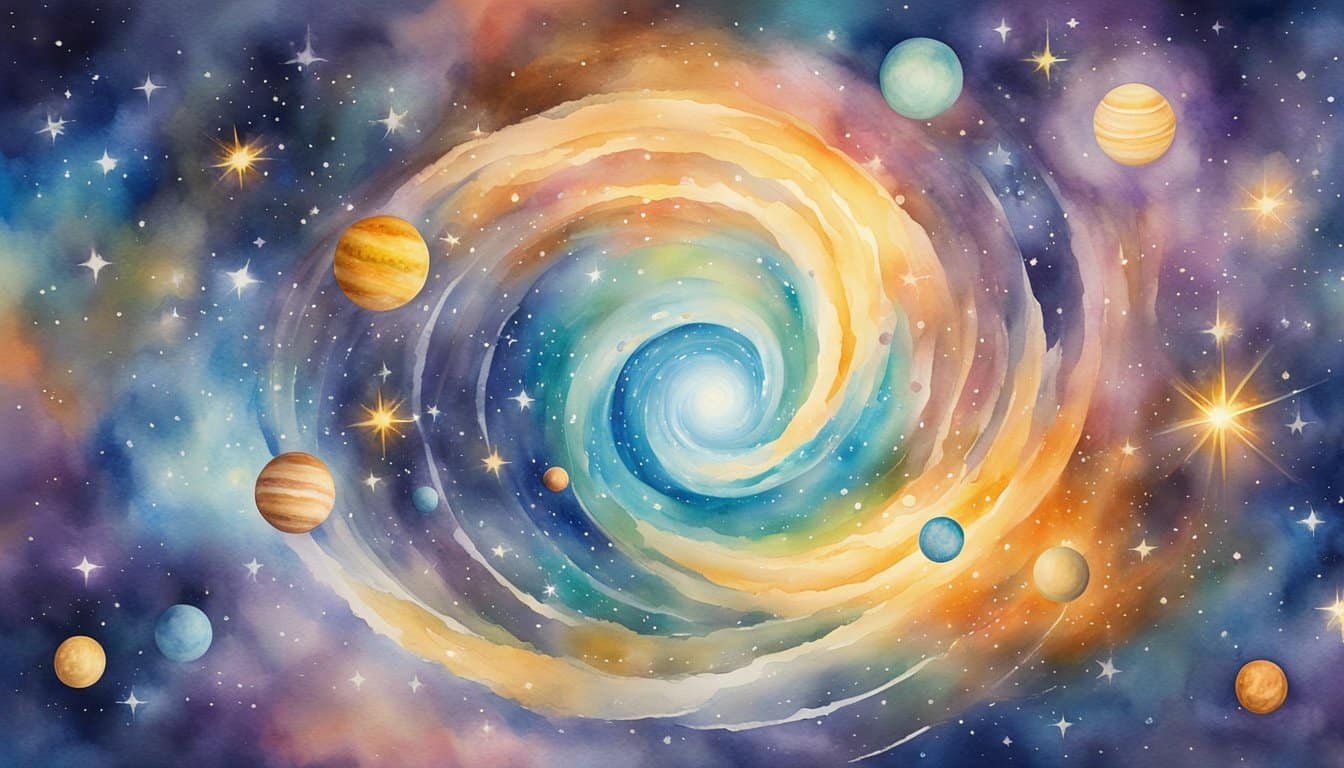The Expanding Universe

As one gazes into the night sky, it’s hard to imagine that every star and galaxy is moving away from us, painting a picture of an ever-growing cosmos. This monumental shift in understanding came with the discovery that the universe is not static but expanding, leading to new cosmic puzzles such as dark matter and dark energy, as well as theories like the Big Bang and cosmic inflation that stretch the imagination to its limits.
Evidence of Expansion
The concept of an expanding universe first took hold with observations of the redshift in the light from distant galaxies, which indicates that they are moving away from us. This redshift is most tellingly observed in the cosmic microwave background radiation, the afterglow of the Big Bang, which uniformly permeates the cosmos and provides a snapshot of the universe at its infancy, heavily supporting the expansion hypothesis.
Concepts of Dark Energy and Dark Matter
To explain the continued expansion of the universe and the gravitational effects that cannot be seen, scientists have posited the existence of dark energy and dark matter. Dark energy, a mysterious force, is driving the accelerated expansion of the universe. Dark matter, although invisible and undetected directly, makes its presence known through its gravitational pull on stars and galaxies.
Inflation Theory and the Big Bang
The theory of cosmic inflation brings an intriguing twist to the Big Bang. It suggests that just after the Big Bang, the universe underwent a period of exponential expansion far greater than what we see today. This rapid inflation, occurring in a fraction of a second, set the stage for the universe’s growth and the formation of the large-scale structures observed in the cosmos.
The Shape and Scale of the Cosmos
Delving into the cosmos, one can’t help but ponder its vastness and structure. Is it an endless expanse or a finite balloon-like form? To unravel this cosmic tapestry, it’s vital to understand its geometry, scale, and the concept of infinity as they apply to space.
Geometry of the Universe
The universe’s geometry is at the heart of cosmology. Mathematically, it could be flat, resembling Euclidean geometry, or curved like the surface of a sphere (positively curved) or a saddle (negatively curved). Cosmological observations to date suggest the fabric of space is flat with a very low curvature, close to zero.
Observable Universe vs Totality
While humans marvel at the observable universe—a sphere about 93 billion light-years in diameter—an important nuance is that there might be much more beyond. The totality beyond our observational limits could be spatially finite, duplicating the contents of the observable patch, or it could be infinite, stretching out forever.
Understanding Infinity in Space
The concept of an infinite universe tickles the imagination, suggesting that the cosmos could have an unbounded canvas, with galaxies strewn across an endless expanse. However, an infinite cosmos doesn’t imply that space would have to be uniformly filled with matter—galaxies could very well be scattered like sprinkles on an infinite spatial cake. The question of whether the universe is infinite or spatially finite remains one of the most compelling in cosmology.
Fundamental Forces and Elements

In exploring the vastness of the cosmos, one cannot overstate the importance of the four fundamental forces of nature—gravitational, electromagnetic, strong nuclear, and weak nuclear forces. These forces govern the interactions between particles, bind atoms together, and orchestrate the cosmic dance of heavenly bodies.
Gravitational Effects and Cosmic Structures
Gravitational force is the fabric that shapes the universe, influencing the formation of structures on a colossal scale, from galaxies to galaxy clusters. Under this force, matter warps the surrounding space-time, as dictated by Einstein’s theory of general relativity. It is why planets orbit stars and why the Milky Way holds its spiral shape.
- Density matters: Regions with higher density attract more matter, leading to a stronger gravitational pull.
- Cosmic structures: Gravitational binding of matter leads to varied structures such as superclusters and voids.
Composition of Galaxies and Stars
Galaxies are sprawling systems composed of dust, gas, and billions of stars, each with its own plethora of planets and smaller bodies. Stars generate energy through nuclear fusion, turning hydrogen into heavier elements like helium, the building blocks of the universe.
- Star composition: Stars fuse lighter elements to create heavier ones, which are then dispersed when stars die.
- Planetary bodies: Planets form from the remnants of stellar dust and gases, capturing a snapshot of their star’s elemental makeup.
Physics Governing the Universe
The puzzle of the infinite universe cannot be pieced together without understanding the laws of physics that reign supreme. These laws, universal and unchanging, dictate the behavior of energy and matter across space and time. Through technological marvels like telescopes, humans have peered into the vast expanse of space, unveiling mysteries of galaxy formation, stellar evolution, and planetary dynamics.
- Radiation: It informs us about the energies and processes happening at astronomical distances.
- Telescope observations: These manifestations of human curiosity extend our gaze far beyond our own galaxy, capturing light across a wide spectrum.

